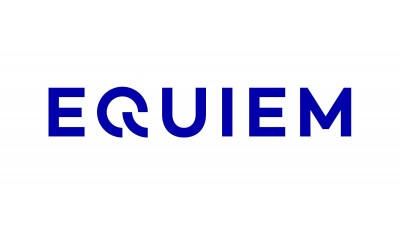5 Reasons To Launch A Tenant Portal For Your Office Building

With community-focused placemaking and co-working office design a major factor in attracting and retaining office tenants, it is critical that property owners and managers embrace technology to maximise their building’s potential.
Online community platforms, known as tenant portals, enable property managers to improve communication while delivering digitised services to their customers. Equiem, an Australian PropTech leader, pioneered the technology for commercial real estate, launching the first tenant portal in 2012 at Rialto, a 904K SF Melbourne office tower.
Since then, over 100 buildings around the world have adopted Equiem.
U.K. and U.S. property owners now have an opportunity to replicate the success already seen within the Australian market by using Equiem. From better engagement with the building population to fostering a strong community of co-workers, here are five key benefits of using a tenant portal in an office building.
1. Engage with the entire building population
Tenant portals provide information to occupants on useful services like health and wellness, food and beverage, dry cleaning and space bookings. Equiem has found up to 90% of a building’s entire population will sign up for the tenant portal to have better access to these amenities.
This also gives property owners and managers unprecedented access to their customers. Traditionally, management teams are limited to communicating with tenant representatives or liaisons, who make up less than 5% of the building.
With a tenant portal, property owners can now message and engage with their entire building in just a few clicks.

2. Create a co-working environment between companies and occupants
Beyond brief, polite conversation in the elevator, companies co-existing within a large building rarely interact with each other. Property managers need a platform that facilitates collaboration between tenants.
“Users can push out a post saying, ‘I need a solicitor to help me with XYZ task,’ and have someone somewhere in the building comment with a response in seconds,” Equiem CEO Gabrielle McMillan said.
By fostering links between the co-inhabitants of the building, managers can make occupants more loyal to their community and the services it can provide.

3. Understand tenants with previously inaccessible data and insights
By using the portal to incentivise large-scale surveys, collect daily polling data and track live usage rates, property managers have the ability to predict trends and react to changes in their asset.
“The key is that the platform must offer genuine value," Equiem head of marketing David Chiapoco said. "It needs to offer relevant, convenient and useful services. After you’ve got the majority of occupants registered, you can then leverage the portal’s analytics to better understand customer behaviours and needs.”
When building owners properly leverage analytics, occupants are more satisfied with their workplace, prompting lease renewals and higher occupancy rates.
4. Unlock new revenue and gain greater return on investment
Tenant portals can connect office workers to all the local amenities outside of a building, such as restaurants, retail, gyms, yoga studios, dry cleaners and newsstands.
A portal also boosts facilities usage. Following a major Equiem campaign on one building’s portal, use of bike storage increased by over 12% in one month. The use of male and female change facilities also increased by 13% and 20%, respectively.
“Every building has a fixed square footage,” McMillan said. “But by unlocking additional value within the existing space, property managers can generate more revenue per square foot, which is what the portal was designed to do.”

5. Unite occupants around community and environmental projects
Bringing tenants and building occupants together around a common project or cause helps to build a sense of community, and encourages tenants to have an open dialogue with their property managers.
At Melbourne’s Rialto, the entire community was empowered to help raise funds to support one of its tenants. When wheelchair user Craig McDonell needed a new chair, Equiem’s community manager facilitated a fundraiser via the building’s portal and managed to raise the £11,500 needed for a new one in just two weeks.
To learn more about how the Equiem portal has been implemented by 10 out of 11 of Australia’s largest property owners click here.

